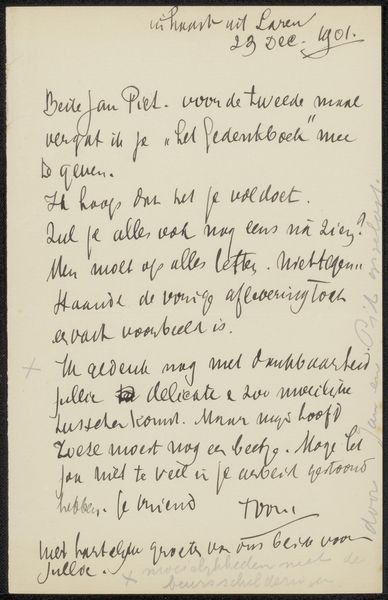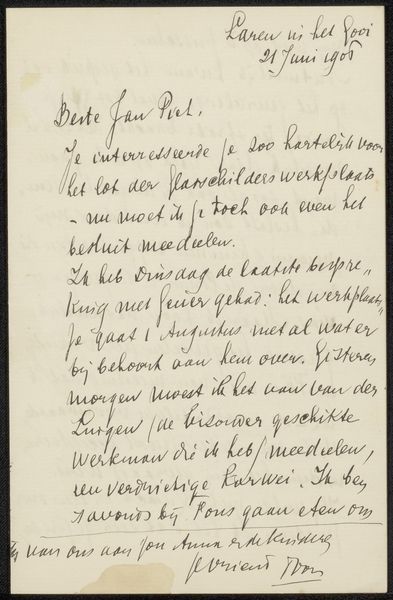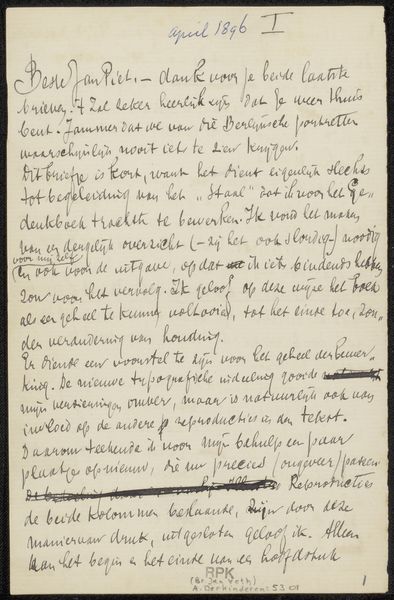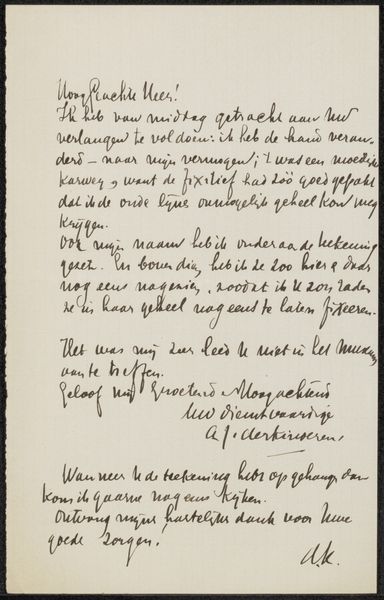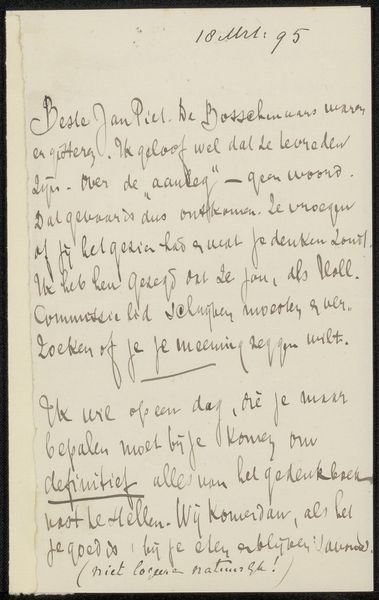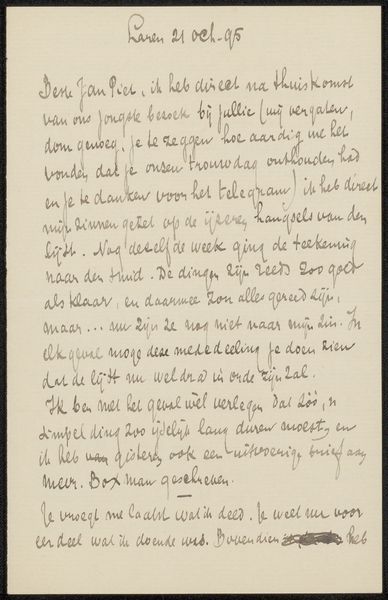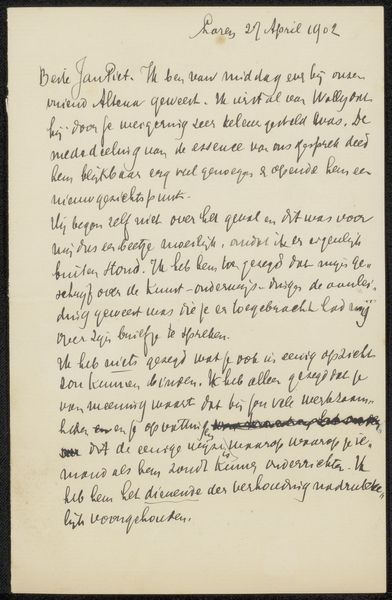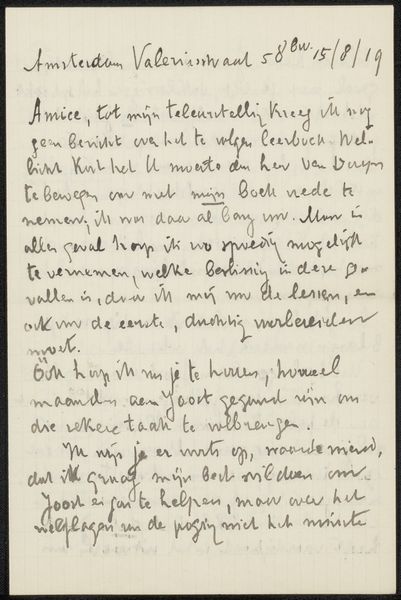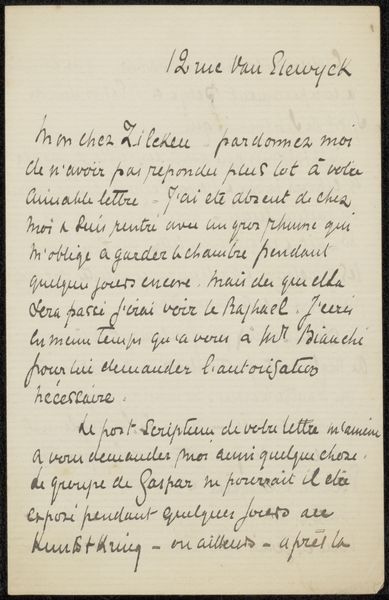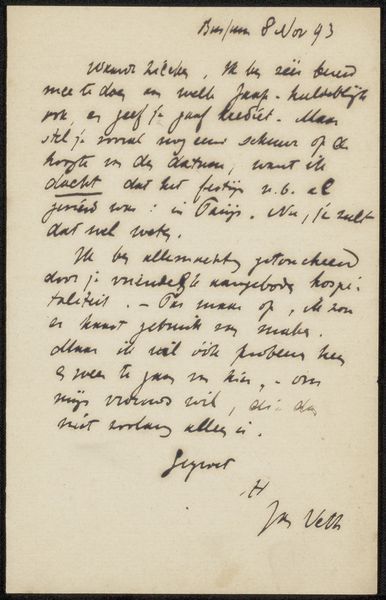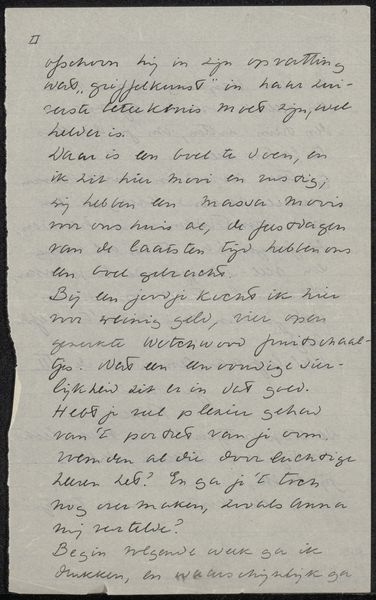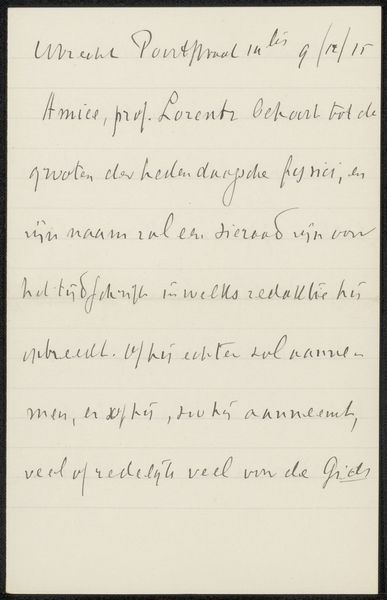
drawing, paper, ink
#
drawing
#
paper
#
personal sketchbook
#
ink
Copyright: Rijks Museum: Open Domain
Curator: This is "Brief aan Jan Veth," a drawing on paper in ink, created by Antoon Derkinderen possibly between 1901 and 1924. Editor: It feels so personal, like stumbling across someone's private thought. The slant of the handwriting, the visible corrections, the fragility of the paper itself... Curator: Exactly. Consider how Derkinderen uses the very act of writing—the physical process of putting ink to paper—as a medium to communicate. This letter becomes more than just words; it embodies the act of communication, of connecting with another person, Jan Veth, who we might know as an important Dutch author, poet, critic. Editor: Absolutely, the social element of that correspondence jumps out. The handwriting seems casual, comfortable...it hints at a pre-existing, probably sustained and intimate, relationship. Are there other documents in museum archives that record similar exchanges? What might that illuminate about the art world in Derkinderen's time? Curator: Well, this could even come from his personal sketchbook which blurs the lines between artistic practice and everyday communication. He makes the art medium feel incidental: all there is, really, is just direct information from artist to friend. That ink itself – was it commonplace, artisanal, costly? Even these details could signal class and access within his artistic sphere. Editor: Right, and what societal factors enabled that intimacy? How did the postal service function? What constraints, material or social, would influence these dialogues? That address on the top-right indicates time and location "Laren N.H. 24 Oct 1901", giving an important marker of context for art production outside formal institutions. Curator: This intimate nature offers the feel of finding one piece of an entire collection, of a huge archive available, a network constantly writing to itself, always in dialogue. This challenges conventional notions of art as being about grand presentation, something for show – the message here is far more grounded, personal, more about doing than display. Editor: Indeed. A work like this really shifts our understanding from the iconic art object towards art as a product and active part of an intricate social and material web. Curator: Absolutely. This peek into Derkinderen's correspondence provides such a direct link to understand his processes. Editor: For me, it humanizes him, and opens doors to all sorts of lines of inquiry to social relationships and cultural patterns of his day.
Comments
No comments
Be the first to comment and join the conversation on the ultimate creative platform.
